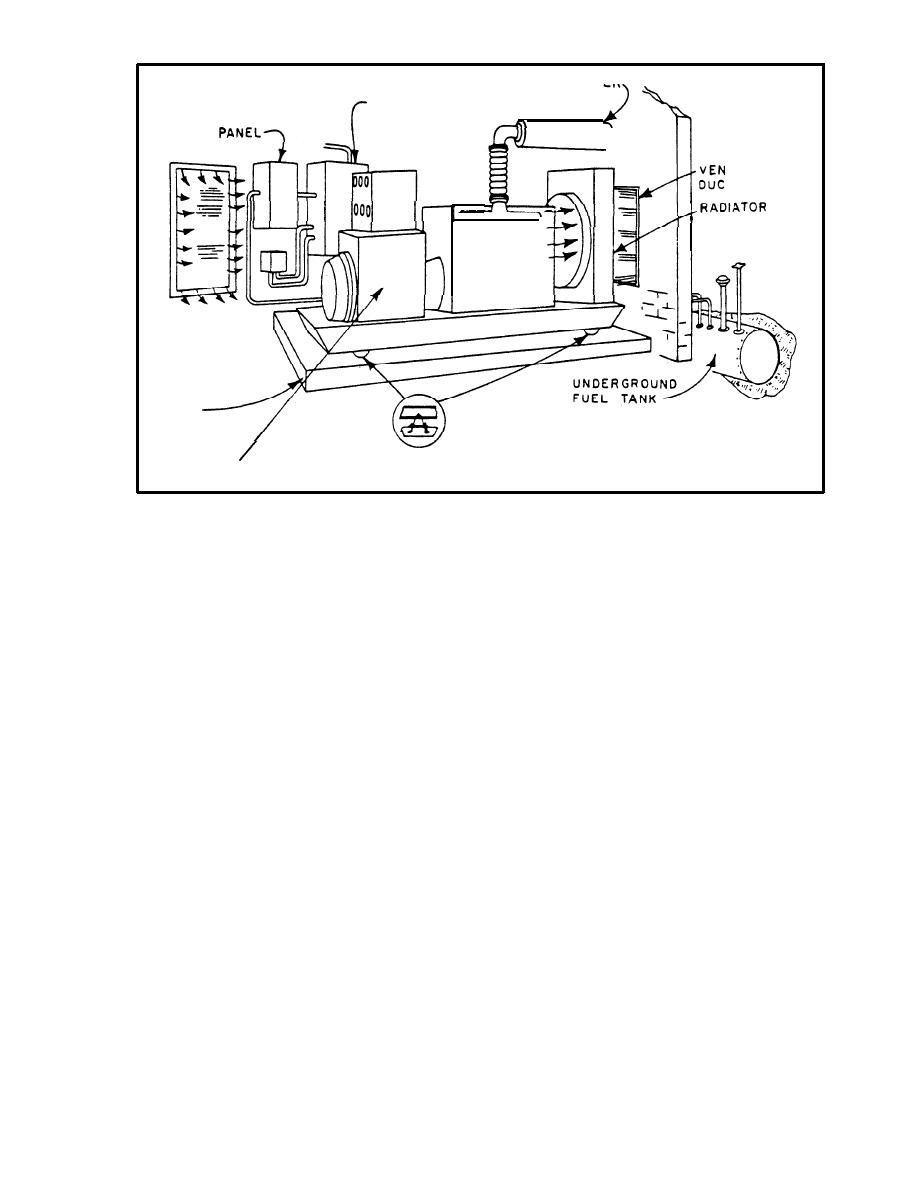

Custom Search
|
|

|
||
 TM 5-685/NAVFAC MO-912
EXHAUST S I L E N C E R
AUTOMATIC
AUTOMATIC
TRANSFER
CRANKING
SWITCH
I
VENT
DUCT
COOLING
PRIME
MOVER
VENTILATION
LOUVERS
CONCRETE
BASE
VIBRATION
DAMPENERS
Figure 2-l. Typical installation of an emergency power plant.
age as liquids. Methods to determine tank contents
the operational requirements of the class B or class
are covered in paragraph 5-7b(8).
C generating plants that are used. Fuel logistics
d. Day tanks. A grounded and vented day tank,
should be considered when sizing fuel storage ca-
having not more than 275 gallons capacity, is in-
pacity
stalled within the power plant building. The tank is
a. Fuels for the equipment described herein (re-
normally filled by transfer pump from the installa-
fer to app C) are combustible substances that can be
tion's main storage tank. Provision should be made
burned in an atmosphere of oxygen. Two categories
to fill the day tank by alternate means (or directly
of fuel storage are discussed: liquids and gases. In
from safety cans or barrels) if the transfer system
either case, fuel storage tanks, associated pumps
fails.
and piping systems must be grounded and protected
from galvanic, stray current or environmental cor-
2-5. Loads.
rosion.
b. Liquid fuel for auxiliary power generating sys-
Most electrical plants serve a varied load of light-
ing, heating equipment, and power equipment,
tems is usually stored in buried tanks equipped
some of which demand power day and night. The
with vent pipes and manholes. Above-ground tanks
annual load factor of a well-operated installation
may be used for storage at some locations. These
will be 50 percent or more with a power factor of 80
tanks usually have provisions for venting, filling
percent or higher. Equipment and controls must be
and cleaning. A gauge with indicator is used to de-
selected to maintain frequency and voltage over the
termine tank contents. Two tanks are necessary to
load range.
ensure a continuous supply during tank cleaning
(every two years) and maintenance operations. Pro-
2-6. Distribution systems.
visions must be made to use a gauge stick to posi-
a. The load determines direct current (DC) or
tively determine depth of tank contents. Storage
tanks should be checked for settled water accumu-
alternating current (AC), voltage, frequency (DC, 25
Hertz (Hz), 50 Hz, 60 Hz, 400 Hz), phases and AC
lated through condensation and the free water
configuration (delta or wye). Voltage and other pa-
drained periodically.
rameters of the distribution system will have been
c. Gaseous fuel is stored in tanks either as a gas
selected to transmit power with a minimum of con-
or a liquid, depending on the type of fuel. Natural
version (AC to DC), inversion (DC to AC), (AC)
gas is stored as a gas. Butane and propane are
transformer, impedance, and resistance loss. For a
cooled and kept under moderate pressure for stor-
2-3
|
 
|
|
 |
||